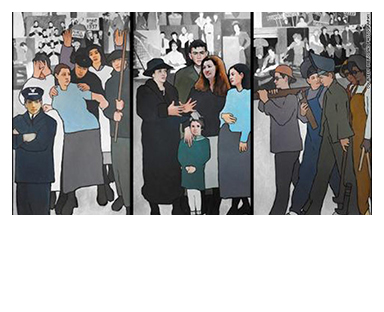Labor Day was created to celebrate the victories of the organized labor movement and its role in building a powerhouse industrial economy with standard of living that was the envy of the world.
But lately it seems as if Labor Day was created to give editorial writers an opportunity to lament the setbacks that the movement has suffered and the tough road that lies ahead.
Not this year. While private-sector union membership is still at historic lows, public-sector unions are under constant attack and anti-labor politicians enjoy unlimited donations from corporate “persons,” there are a number of signs that the pendulum is starting to swing back in the favor of working families.
These developments include the growing momentum behind a national living wage; a proposed expansion of overtime eligibility for salaried workers; and a ruling that makes it more difficult for national chains to hide behind franchise relationships in order to duck their responsibilities to their workforces.
All of these developments have the potential to improve the buying power and the bargaining clout of American workers, who still haven’t seen the benefits of a historic period of economic growth.
TROUBLING TRENDS
Real wages for American workers have been stagnant since the 1970s. Millions of what were once good-paying jobs making cars, steel, paper or textiles have either moved overseas or have been swallowed up by technology.
Jobs in retail, fast food and janitorial services, which can’t be offshored, usually don’t pay enough to support a family, a real problem for a country whose top employer is Wal-Mart, not General Motors.
Meanwhile, corporate profits and stock prices continue to climb. The economic story of the last 35 years is that capital grows faster than wages from work unless something disrupts the trend.
The “Fight for 15” aims to do just that. What started as a campaign among fast food workers in big cities, this organizing effort has drawn national attention to the exploitative $7.25 national minimum wage, which keeps workers and their children mired in poverty.
The “Fight for 15” movement has made achieving a livable wage into a moral issue relevant to everyone, much as the fight for an eight-hour day was a unifying message a century ago.
Companies that say they can’t afford to pay enough to keep their employees off public assistance should be forced to reconsider their business models. Customers who won’t pay a little more for a hamburger so that a fellow human being can afford to move out of a homeless shelter should re-examine their values. The $15-per-hour minimum wage, especially on the national level, sounds more reasonable all the time.
FEDERAL RELIEF
Other changes from the federal government also would slightly change the balance of power between employers and employees. One proposed by the Obama administration’s Department of Labor would double the salary threshold under which workers could be eligible for overtime, moving it from $23,600 a year (below the poverty line for a worker with children) to $50,400.
And a recent decision by the National Labor Relations Board would make companies that sell franchises partly responsible for the treatment of their employees.
Previously a huge corporation such as McDonald’s, which directly owns only 10 percent of its stores, could avoid collective bargaining with workers, forcing them to bargain exclusively with franchise holders, often small companies operating on shoestring budget.
Now the corporations can be compelled to negotiate the pay and working conditions of the employees whose work contributes to their profits.
None of these developments alone will bring back the glory days of the labor movement, but taken together they are a step toward a much-needed correction in the balance of power between workers and business owners.
And on Labor Day, that’s something to celebrate.
Send questions/comments to the editors.


